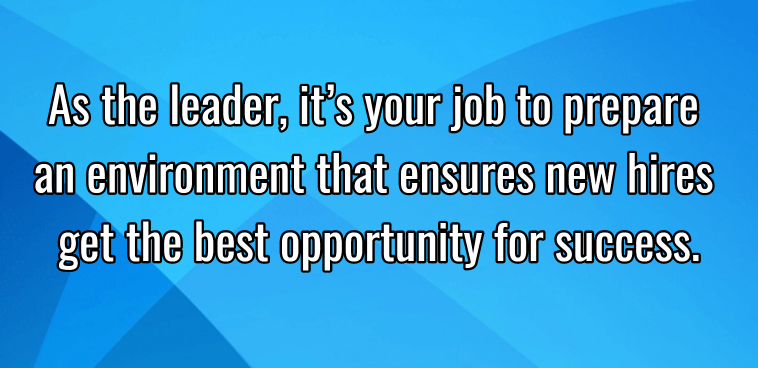You just hired a great employee. The employee has all the qualifications, is a quick-study, takes initiative and is always on time.
The problem: Your employee is a know it all. The know-it-all newbie says things like, “That’s not how we did it at my former company.” Or, “In my advanced certification class they said it should be done this way instead of that way.” The know-it-all newbie challenges the supervisor, frustrates the trainer, and irritates seasoned employees.
If you don’t have a system in place to deal with know-it-all newbie, be prepared for workplace drama. The more the newbie vies for attention, the more the seasoned workers resent and refuse to play as a team. You must get to the root of the know-it-all problem before it takes bloom.
Here are three ways to course-correct the know-it-all newbie.
- Orientation
- Agreements
- Accountability
Orientation
A good orientation is the best way to set up the newbie for success. At the orientation, you have a one-on-one conversation that goes something like this: “Welcome to our organization. I’m going to tell you what will make you excel and what will make you fail here.” Then, instruct your new employee to learn from colleagues and take advice from his or her trainer.
For example, you might say something like, “Kim, we know you graduated with honors from the university, and we know you previously worked with the Brown practice. However what we expect here is for you to learn our way of doing business. What will make you fail here is to challenge our ways of doing business before you have earned the right to do so. This usually takes anywhere from six months to a year.”
Let the new employee know that there is a reason processes are in place, and there will be ample time to answer questions at a future scheduled one-on-one between the employee, the trainer and the boss.
Agreements
Good agreements create good boss-employee relationships. Set the expectations about moving the trainee-trainer relationship forward. Make sure both the employee and the trainer knows what is expected and how those roles fit into the bigger picture. Make it clear that if either is unhappy with the relationship it is their job to make a verbal or written request to end the relationship and find another match for training. This puts a mutual responsibility on the trainer and the trainee. Reassure both that there will be no judgment as long as each takes responsibility for the learning relationship.
Accountability
For the sake of accountability, set up a second meeting between you, the employee and the trainer. Take the opportunity to address any know-it-all tendencies so that you can pull out the problem by the roots. Facilitate conversation between the trainer and employee to express any potential gaps or conflicts. Allow the trainee to ask questions about your processes and procedures. Offer performance feedback even if the conversation seems a bit difficult. Your newbie will thank you in the long run.
Conclusion: As the leader, it’s your job to prepare an environment that ensures new hires get the best opportunity for success. By hosting a formal orientation, setting the right agreements, and applying accountability you contribute to a culture of cooperation and teamwork.
Marlene Chism is a consultant, international speaker and the author of “Stop Workplace Drama” (Wiley 2011) and “No-Drama Leadership” (Bibliomotion 2015). Visit her website, and connect via Linked In, Facebook and Twitter.
If you enjoyed this article, join SmartBrief’s e-mail list for our daily newsletter on being a better, smarter leader. We also have more than 200 industry-focused newsletters, all free to sign up.
